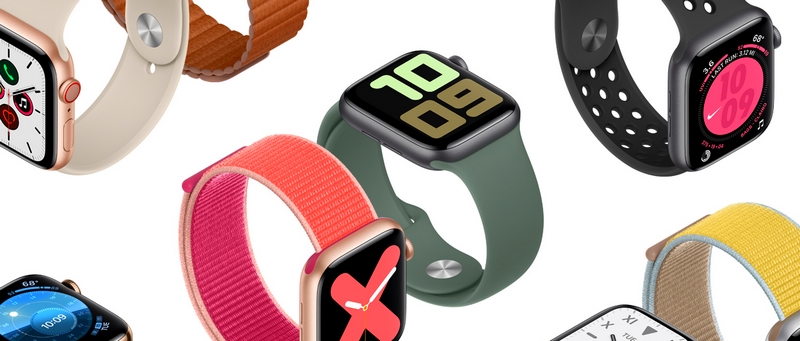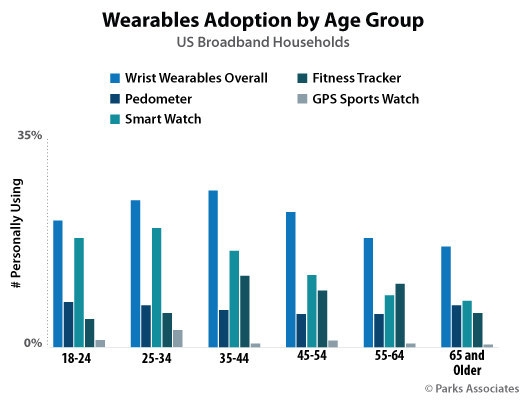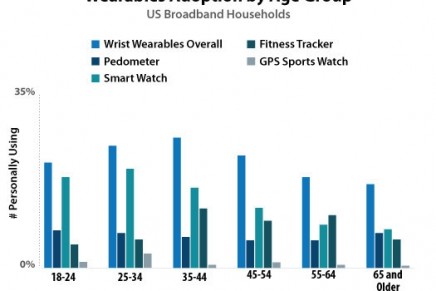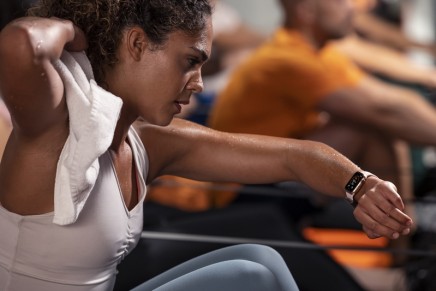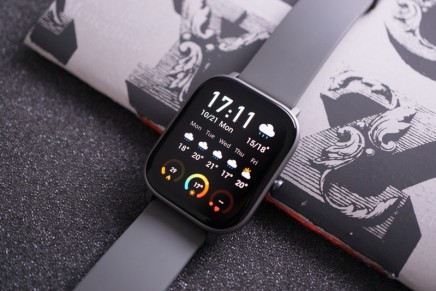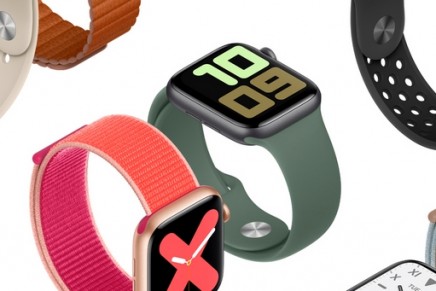More than 3,000 health and fitness pros surveyed by the American College of Sports Medicine (ACSM) say wearable tech will be the top trend in fitness in the coming year. ACSM released the results of its annual fitness trend forecast in the article “Worldwide Survey of Fitness Trends for 2020” published in the November/December issue of ACSM’s Health & Fitness Journal.
Now in its 14th year, ACSM’s annual survey helps the health and fitness industry make critical programming and business decisions. This year’s survey provided 38 potential trends to choose from, including possible new trends like lifestyle medicine. Other trends were more specifically defined. Notable trends include the continued popularity of high-intensity interval training (HIIT) and group training (both in the top three for three years in a row); an increased interest in Exercise is Medicine and fitness programs for older adults; and a growing emphasis on health and wellness programs.
Here are top 10 fitness trends, according to ACSM:
Wearable Technology: Includes fitness trackers, smart health watches, heart rate monitors and GPS tracking devices.
High-Intensity Interval Training (HIIT): HIIT involves short bursts of activity followed by a short period of rest or recovery. Despite concerns expressed by some fitness professionals, these 30-minute or less sessions continue to be a popular form of exercise around the world.
Group Training: Group exercise instructors teach, lead and motivate individuals through intentionally designed, larger, in-person group movement classes of more than five participants. Group programs are designed to be motivational and effective for people at different fitness levels, with instructors using leadership techniques that help individuals achieve fitness goals.
Training with Free Weights: Instructors focus on teaching proper form for exercises using barbells, kettlebells, dumbbells and/or medicine balls. Resistance progressively increases as correct form is accomplished. Training with free weights debuts at no. 4 in 2020.
Personal Training: The popularity of one-on-one training continues to increase as it becomes more accessible online, in clubs, at home and in worksite fitness facilities. Personal training includes fitness testing and goal setting with the trainer working one on one with a client to prescribe workouts specific to individual needs and goals.
Exercise is Medicine(r): This global health initiative by ACSM encourages health care providers to include physical activity assessment and associated referrals to certified fitness professionals in the community as part of every patient visit.
Body Weight Training: Body weight training uses minimal equipment, making it more affordable. Not limited to just push-ups and pull-ups, this trend allows people to get “back to the basics” with fitness.
Fitness Programs for Older Adults: As Baby Boomers age into retirement, many health and fitness professionals are taking the time to create age-appropriate fitness programs to keep older adults healthy and active.
Health / Wellness Coaching: This growing trend integrates behavioral science into health promotion and lifestyle medicine programs. A one-one-one and small group approach provides support, goal setting and encouragement.
Employing Certified Fitness Professionals: Hiring health/fitness professionals certified through programs accredited by the NCCA is more important than ever. ACSM is one of the largest and most prestigious fitness-certification organizations in the world.
Research firm examines the state of the wearables market and consumer adoption of major brands including Fitbit, Apple, Samsung, and Garmin
Connected wearables research from Parks Associates finds that Fitbit leads the market for wrist wearables due in large part to the brand’s dominance among older consumers. 360 Deep Dive: Consumer Demand for Connected Wearables reports that while Fitbit and Apple share the lead among consumers ages 18-24, Fitbit has a wide lead among older consumers, commanding 68% of wearables owners 55-64 and 60% of wearables owners 65 and older.
“Fitbit leads among fitness trackers, and its entry in the smartwatch market has been successful, but Apple generates substantially more revenue per device,” said Kristen Hanich, Senior Analyst, Parks Associates.
“Companies in the wearables space are working to differentiate through new styles and capabilities and to create new revenues through companion services, like Fitbit’s strategy with its new Fitbit Premium fitness coaching service, designed to increase brand stickiness and add new value propositions.”
Parks Associates’ research finds Apple and Samsung watches are used for a wider variety of purposes than are Fitbit watches. Just 43% of Fitbit smart watch owners regularly receive texts and email notifications on their device as compared to 75% of Apple owners or 79% of Samsung owners. Likewise, Apple and Samsung smartwatch owners are more likely to engage in a variety of news/entertainment activities, including weather and music applications.
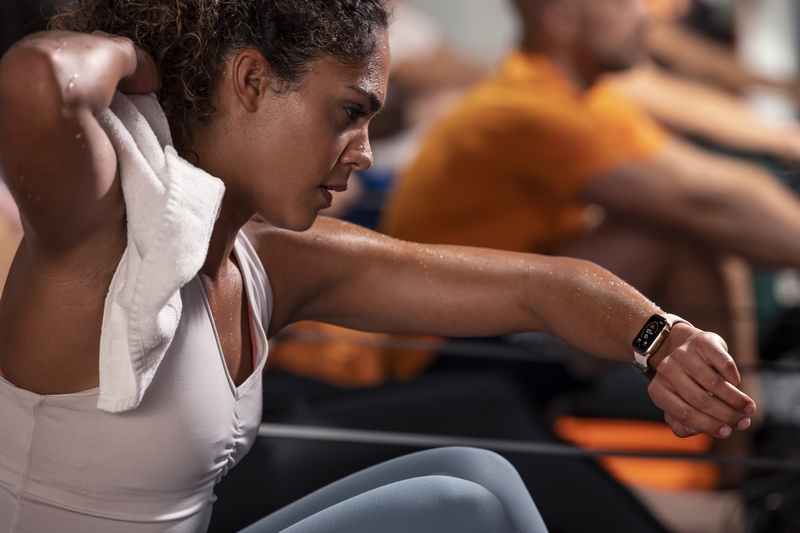
Orangetheory Fitness debuts new Apple Watch connectivity, membership program; @orangetheoryfitness.com
Orangetheory Fitness learned that the most common request was to use Apple Watch in class.
The billion-dollar fitness brand Orangetheory Fitness has created a highly anticipated device for members to use Apple Watch to track heart rate data during workouts, along with iOS apps for coaches and sales associates to enhance the member experience both in and out of studio. This new technology will lead to increased personalization, motivation and encouragement for members to live “a more vibrant life.”
“We’re addressing the needs of our members by providing an integration between the workout they do and the technology they use, leading to a seamless fitness experience and healthier life.”
“Apple Watch is designed to help people live a better day by being more active,” said Jay Blahnik, Senior Director of Fitness for Health Technologies at Apple. “With workout tracking, Apple Pay and a new membership program, we are thrilled Orangetheory Fitness is integrating Apple Watch into a comprehensive experience for their customers.”
Lifesum Reveals Why Google’s ‘Top Trending Diets’ for 2019 May Not Be Right for Consumers in 2020
Last weeek, Google announced its “Year in Search” analysis that included the top trending searches in 2019. The analysis is based on an aggregation of trillions of search queries, identifying what people around the globe are most curious about. The digital health app Lifesum has revealed new insight on why Google’s “Top Trending Diets” for 2019 may not work for all consumers in 2020.
“Intermittent Fasting,” “The Dr. Sebi Diet,” “The 1200 Calories Diet,” “Keto Ultra Diet” and the “GOLO Diet” are the “Top Trending Diets” for 2019.
Nutritionists with Lifesum say selecting random diets based on popularity will not always lead to successful weight loss since individual attributes – like work, lifestyle, environment, time, allergies and genetics – all play a defining role in whether a diet will succeed.
Lifesum has created a self-assessment test that factors in these individual attributes, allowing consumers to identify the best weight loss plan based on the individual, like if they love to cook or have a sweet tooth.
The new Amazfit GTS smartwatch with its eye-catching 1.65-inch high-resolution AMOLED display combines health, fitness and fashion.
The Amazfit GTS by the Huami wearables company retails for $149.99 and comes with a 1.65” AMOLED screen, customizable watch face widgets, and a slim and durable metal body.
The new entry picks up on the popularity and critical success of last year’s award-winning Amazfit Bip with an upgraded square design sporting an eye-catching 1.65-inch high-resolution AMOLED display wrapped in a slim all-metal body.
Huami Amazfit GTS boasts several health-conscious features, including the innovative BioTracker™ PPG heart rate sensor and RealBeats, AI data engine to monitor your heart health 24/7 and identify any automatic arrhythmia (including atrial fibrillation).
Smart app notifications, customizable watch face widgets, Bluetooth music control, and a useful find-my-phone feature help GTS owners stay organized and connected on the go—all of this while being water-resistant to depths up to 50 meters, and lasting up to 14 days on a single charge.

